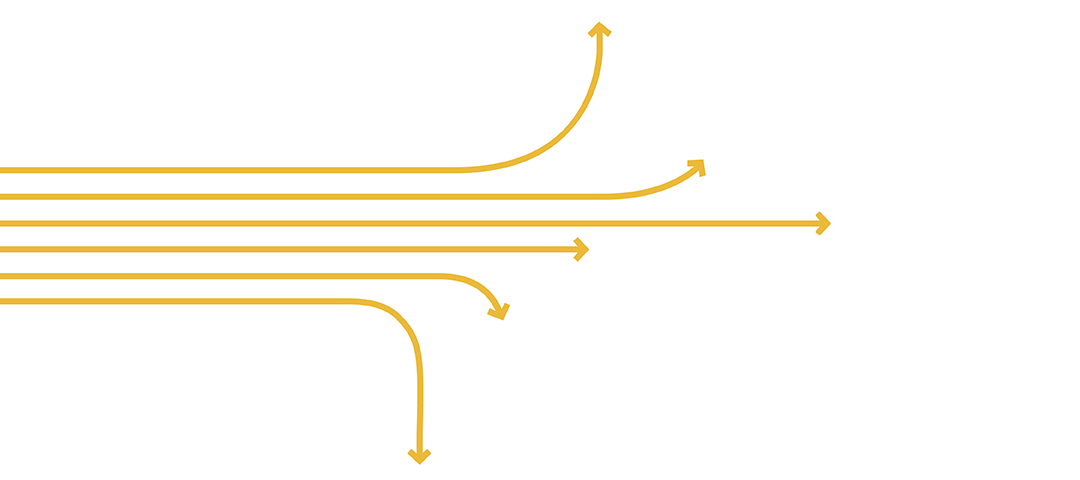The Future of Asia: Forces of Change and Potential Surprises – Supplementary Report

Rising Inequality Threatens to Derail Projected Asian Growth
On this page
What is it?
Why is it important?
References
What is it?
The main drivers of Asia’s rapid growth have been technological progress, globalization, and marketoriented reform. These very same factors increase the inequality gap between the rich and poor, as highly skilled, capital rich, and urban centres are favoured over those without access to resources.1 Although economic growth in Asia has benefited most of the region’s populations, some have benefited more than others.
Over the past two decades, 11 of 28 Asian economies (over 80% of the region’s population) experienced rising income inequality, as measured by the Gini coefficient.2 This trend is particularly notable in China, India and Indonesia – the most populous Asian countries – as well as Pakistan, Bangladesh, Sri Lanka and Vietnam, despite high average economic growth rates. China has experienced the highest economic growth rate of 10%, but also the highest rise in inequality over the same period.
Inequalities in the three most populous countries have regional, rural-urban and educational dimensions. More employment opportunities are generally available in urban and coastal areas that act as global trade hubs, than in rural and inland areas. In India, much inequality is driven by higher earnings in skill-intensive jobs and industries in urban settings.3 In both Indonesia and India, bottlenecks in infrastructure (i.e., limited electricity supply and poor roads) in impoverished, remote and rural areas also contribute to inequality.
Why is it important?
While a modest degree of income inequality is generally considered conducive to economic growth, as it can foster initiative and innovation, this relationship reverses beyond a certain threshold. Extreme inequality can limit access to productive employment, as many people cannot obtain the resources they need to invest in entrepreneurship and education for themselves or their children. Income inequality contributes to an influential elite class that can shape resource allocation in ways that are sub-optimal for society as a whole. It can also marginalize populations and may lead to crime and vandalism, which can undermine stability and act as a deterrent to future business investments.4 The increasing divide between the rich and poor can reduce social cohesion, create barriers to social and economic mobility, foster corruption, weaken governance structures, and create social unrest,5 6 all of which could impact economic growth.7 For example, cronyism and ‘favours’ in a range of Asian countries, such as the Philippines and Thailand, are a constant source of social unrest and political dysfunction.
Asian governments are initiating measures to combat inequality in order to ensure stability and foster economic growth. China, India and Indonesia’s most recent national development plans focus on inclusive economic growth. China’s goal is to create 50 million urban jobs (largely in the services sector), initiate tax reform to improve income distribution, undertake governance reforms, invest in infrastructure projects in underdeveloped western provinces, and expand compulsory education, health coverage, pension programs and housing opportunities.8 India’s aim is to enhance economic opportunities for the poor by upgrading infrastructure, revitalizing manufacturing, improving agricultural productivity, and developing skills.9 Indonesia plans to expand half of its infrastructure spending to the eastern region, promote green growth initiatives, and increase investment in social safety programs such as food security, employment creation, community empowerment, health care and education.10
The jury is still out as to whether these policies will be sufficient to stem the rising tide of inequality and the corresponding impact on economic growth. Setbacks by Asian governments in addressing income inequality and redistributing wealth may reduce opportunities for the most marginal to fully participate in the economy. It will also reduce the policy options available to governments to alleviate poverty. In 2012, the Asian Development Bank conducted simulations for the period spanning the 1990s and 2000s to show the degree to which rising inequality holds back poverty reduction. The ADB concluded that had inequality not increased during this period, the poverty headcount for India, China and Indonesia would be substantially different than what it is today. In India, the poverty headcount rate would have declined to 29.5% in 2008, instead of the actual 32.7%. In China, extreme poverty would have declined to 4.9%, instead of the actual 13.1%. In Indonesia, the poverty rate would have fallen to 6.1%, instead of the actual 16.3%.11
References
- Francisco, R. “ADB: Rising income inequality a threat to Asia’s growth.” ABS-CBN News. April 2012. http://www.abs-cbnnews.com/business/04/11/12/adb-rising-income-inequality-threat-asias-growth(link is external)
- “Deepening Divide: Can Asia Beat the Menace of Rising Inequality?” Asian Development Bank. April 2013. http://www.adb.org/publications/deepening-divide-can-asia-beat-menace-rising-inequality(link is external)
- Kundu, K. “India has a problem with inequality, and it won’t be solved easily.” Business Standard. May 2013. http://www.business-standard.com/article/opinion/india-has-a-problem-with-inequality-and-it-won-t-be-solved-easily-113052500705_1.html(link is external)
- Berg, A. and J. Ostry. “Equality and Efficiency.” International Monetary Fund. September 2011. http://www.imf.org/external/pubs/ft/fandd/2011/09/Berg.htm(link is external)
- “China to tackle inequality, as social unrest grows.” Equal Times. February 2013. http://www.equaltimes.org/china-to-tackle-inequality-as-social-unrest-grows?lang=en#.U4Sgw_ldUwA(link is external)
- Otto, B. and I. Sentana. “Indonesia Strikers Turn Out in Force.” The Wall Street Journal. October 2012. http://online.wsj.com/news/articles/SB10000872396390443493304578034272131159086(link is external)
- Hollingshead, A. “Income Inequality, Wealth, and Illicit Financial Flows in Asia.” Financial Transparency Coalition. August 2013. http://www.financialtransparency.org/2013/08/01/income-inequality-wealth-and-illicit-financial-flows-in-asia/(link is external)
- “China’s 12th Five-Year Plan: Overview.” KPMG. March 2011. http://www.kpmg.com/CN/en/IssuesAndInsights/ArticlesPublications/Publicationseries/5-years-plan/Documents/China-12th-Five-Year-Plan-Overview-201104.pdf(link is external)
- “Twelfth Five Year Plan 2012-17.” Government of India – Planning Commission. 2012. http://planningcommission.gov.in/plans/planrel/12thplan/welcome.html(link is external)
- “National Medium-Term Development Plan (RPJMN 2010-2014).” Indonesia-Investments. http://www.indonesia-investments.com/projects/government-development-plans/national-medium-term-development-plan-rpjmn-2010-2014/item307(link is external)
- “Asian Development Outlook 2012: Confronting Rising Inequality in Asia.” Asian Development Bank. 2012. http://www.adb.org/sites/default/files/pub/2012/ado2012.pdf